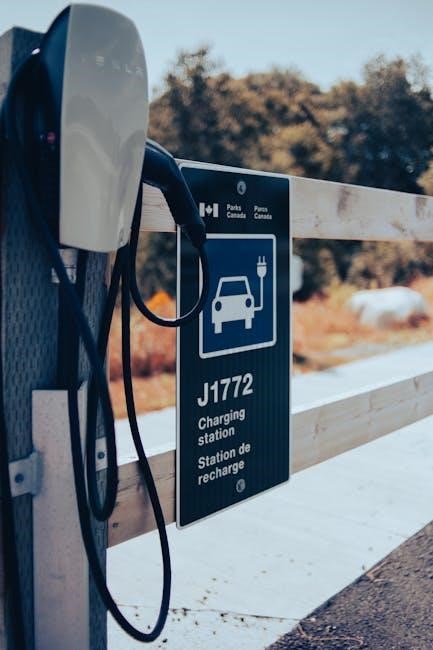drill charging station plans pdf

Drill charging station plans offer a structured approach to creating a dedicated space for your cordless drills and their accessories. These plans often include detailed instructions, material lists, and diagrams to guide you through the building process, resulting in a well-organized workshop.

Benefits of Building a Drill Charging Station
Building a drill charging station provides numerous advantages. It promotes organization by consolidating your tools and accessories. It also offers convenience by keeping your drills charged and ready for use, leading to increased efficiency and a longer lifespan for your valuable power tools.

Organization and Space Saving
A dedicated drill charging station significantly enhances workshop organization by providing a designated location for cordless drills, drivers, and their corresponding batteries. No longer will you have to rummage through cluttered shelves or drawers to locate the right tool. By centralizing your drill storage, you create a streamlined workspace, reducing the likelihood of misplacing tools and increasing overall efficiency.
Furthermore, a well-designed charging station optimizes space utilization. Wall-mounted designs are particularly effective, freeing up valuable floor or workbench area. The vertical storage of drills and accessories maximizes the available space, making it ideal for small workshops or garages with limited square footage. Integrating storage for drill bits, chargers, and other related items further contributes to a clutter-free environment. With everything in its place, you’ll have more room to maneuver and work on your projects. This organized setup not only saves space but also enhances safety by minimizing tripping hazards and creating a more efficient workflow.
Convenience and Efficiency
A drill charging station offers unparalleled convenience by keeping your cordless drills readily accessible and fully charged. No more searching for batteries or waiting for them to charge when you need them most. With a dedicated charging station, your drills are always prepared for immediate use, saving valuable time and effort. This accessibility streamlines your workflow, allowing you to transition seamlessly between tasks without interruption.
The efficiency of a drill charging station extends beyond mere convenience. By centralizing your charging process, you can easily monitor battery levels and ensure that all batteries are consistently charged. This eliminates the frustration of discovering a dead battery mid-project. Moreover, a well-designed charging station promotes better battery management, extending the lifespan of your batteries and reducing the need for replacements. The organized layout also makes it easier to identify and retrieve specific drills or accessories quickly, further enhancing your productivity and minimizing wasted time in the workshop.
Protection and Longevity of Tools
A dedicated drill charging station provides a safe and secure environment for your valuable cordless drills, protecting them from potential damage. By keeping your drills off the floor and away from cluttered work surfaces, you minimize the risk of accidental bumps, scratches, or drops. This physical protection helps maintain the aesthetic appeal and functionality of your tools, ensuring they remain in optimal condition for years to come.
Furthermore, a charging station contributes to the longevity of your drills by promoting proper battery care. Overcharging or undercharging batteries can significantly reduce their lifespan. A dedicated charging station often incorporates features that help regulate the charging process, preventing overcharging and ensuring that batteries are charged to their optimal level. This careful management of battery health translates to extended battery life and reduced replacement costs. Additionally, the organized storage provided by a charging station helps prevent tangling of cords and damage to chargers, further safeguarding your investment in power tools.

Key Features to Consider in Drill Charging Station Plans
When selecting drill charging station plans, consider size, power outlet integration, and accessory storage. These features ensure the station meets your specific needs and optimizes your workspace organization for efficiency and tool longevity.
Size and Capacity
When choosing drill charging station plans, size and capacity are paramount. Evaluate the number of drills you need to accommodate, considering future acquisitions. A compact design saves space, while a larger station offers room for growth. Assess the available wall or workbench area to ensure the station fits comfortably.
Consider the physical dimensions of your drills and chargers to allocate sufficient space within the station. Plan for additional storage for batteries and accessories to maximize organization. Some plans offer adjustable shelving or modular designs to adapt to your changing needs.
Determine the optimal depth of the station to prevent it from protruding too far into your workspace. Balancing storage capacity with space constraints is key to creating a functional and efficient drill charging station. A well-planned size and capacity will enhance your workshop organization and streamline your workflow.
Power Outlet Integration
Power outlet integration is a crucial aspect of drill charging station plans. Incorporating power outlets directly into the station streamlines the charging process and eliminates the need for extension cords. Consider the number of chargers you need to accommodate and choose plans that offer sufficient outlet capacity.
Strategically position the outlets to ensure easy access for each charger. Internal wiring should be neatly organized to prevent clutter and potential hazards. Some plans include surge protectors to safeguard your valuable tools from power fluctuations.
Ensure the integrated power outlets comply with local electrical codes and regulations. Using a dedicated circuit can prevent overloading and enhance safety. Proper grounding is essential to minimize the risk of electrical shock. A well-integrated power outlet system will enhance the convenience and safety of your drill charging station.
Storage for Accessories
Adequate storage for accessories is a key consideration when evaluating drill charging station plans. A well-designed station should not only accommodate drills and chargers but also provide organized storage for drill bits, screws, batteries, and other essential accessories.
Look for plans that incorporate shelves, drawers, or pegboards to maximize storage space. Adjustable shelves offer flexibility to accommodate items of various sizes. Drawers are ideal for storing small parts and keeping them dust-free. Pegboards provide a versatile solution for hanging frequently used items within easy reach.
Consider the types and quantities of accessories you need to store when selecting a plan. A customized storage solution will enhance the efficiency of your workspace and prevent clutter. Clear labeling of storage compartments can further improve organization and accessibility; Integrating accessory storage into your drill charging station creates a comprehensive and organized tool management system.

Materials and Tools Required

Constructing a drill charging station typically involves a selection of wood, such as plywood or Baltic birch, known for its durability and smooth finish. The specific type and thickness of wood will depend on the chosen plan and desired sturdiness. Fasteners like wood screws are essential for assembling the structure securely.
Essential tools include a saw (circular saw or hand saw) for cutting the wood to size, a drill for creating pilot holes and driving screws, and a measuring tape for accurate measurements. A square ensures right angles during assembly, while sandpaper smooths rough edges.
Depending on the complexity of the design, additional tools like a jigsaw for curved cuts or a router for creating decorative edges may be required. Safety glasses and ear protection are crucial for personal safety throughout the building process. A pencil and marking tools are needed for precise layout and marking of cut lines. Having the right materials and tools readily available streamlines the building process and ensures a successful outcome.

Step-by-Step Building Process
The initial step in the building process involves carefully reviewing the chosen drill charging station plans. Understanding the dimensions, layout, and specific instructions is crucial for a successful build. Begin by accurately measuring and cutting the wood pieces according to the plan’s specifications. Precision in cutting ensures that the final assembly will be square and stable.
Next, assemble the main structure of the charging station, typically starting with the base and sides. Use wood screws and wood glue to securely join the pieces. Ensure that all corners are square and that the structure is stable before proceeding.
Once the main structure is assembled, add any internal shelves, dividers, or drill holders as specified in the plans. These components provide organization and storage for drills, batteries, and accessories. Attach power strips or outlets if the plans include electrical integration, ensuring all electrical work is done safely and according to code. Finally, sand all surfaces to smooth any rough edges and apply a finish, such as paint or varnish, to protect the wood and enhance the appearance of the charging station.

Customization Options and Design Ideas
When it comes to customization, drill charging stations offer a plethora of opportunities to tailor the design to your specific needs and preferences. Consider incorporating adjustable shelves to accommodate various drill sizes and accessories. Adding a drawer or cabinet provides concealed storage for drill bits, screws, and other small items.
For design ideas, explore different layouts and configurations. A wall-mounted charging station saves floor space and keeps tools within easy reach. A mobile charging station, equipped with casters, allows you to move your tools around the workshop as needed. Think about incorporating a pegboard backing to hang frequently used tools and accessories.
Furthermore, personalize the appearance of your charging station with different finishes, colors, and hardware. Use contrasting wood stains or paints to create a visually appealing design. Add labels to shelves and drawers to easily identify the contents. Consider incorporating a built-in light to illuminate the charging station and improve visibility.

Safety Considerations
When constructing a drill charging station, safety should be paramount. Always disconnect power tools before working on them or their batteries. Ensure the charging station is well-ventilated to prevent overheating of batteries during charging. Use a surge protector to safeguard against power fluctuations that could damage your tools or batteries.
When working with electricity, exercise caution and follow all applicable electrical codes. Use properly grounded outlets and wiring. Avoid overloading circuits by plugging too many chargers into one outlet. Regularly inspect the charging station for any signs of damage, such as frayed wires or loose connections.
Wear appropriate safety gear, including eye protection and gloves, when building the charging station. Use caution when cutting and assembling wood or other materials. Keep the work area clean and free of clutter to prevent accidents. Store flammable materials away from the charging station to reduce the risk of fire.

Free vs. Paid Drill Charging Station Plans
When deciding on drill charging station plans, a key consideration is whether to opt for free or paid options. Free plans are readily available online and can be a great starting point, especially for those on a budget or with basic woodworking skills. These plans often provide simple designs and instructions, suitable for straightforward charging stations.
However, free plans may lack the detail and precision found in paid plans. Paid plans typically offer more comprehensive instructions, including detailed diagrams, material lists, and step-by-step guidance; They may also include advanced features or customization options. Investing in paid plans can be beneficial for complex designs or if you prefer a more structured approach.
Consider your skill level, budget, and desired features when choosing between free and paid plans. Read reviews and examine the plan’s contents before making a decision. Ultimately, the best choice depends on your individual needs and preferences.




